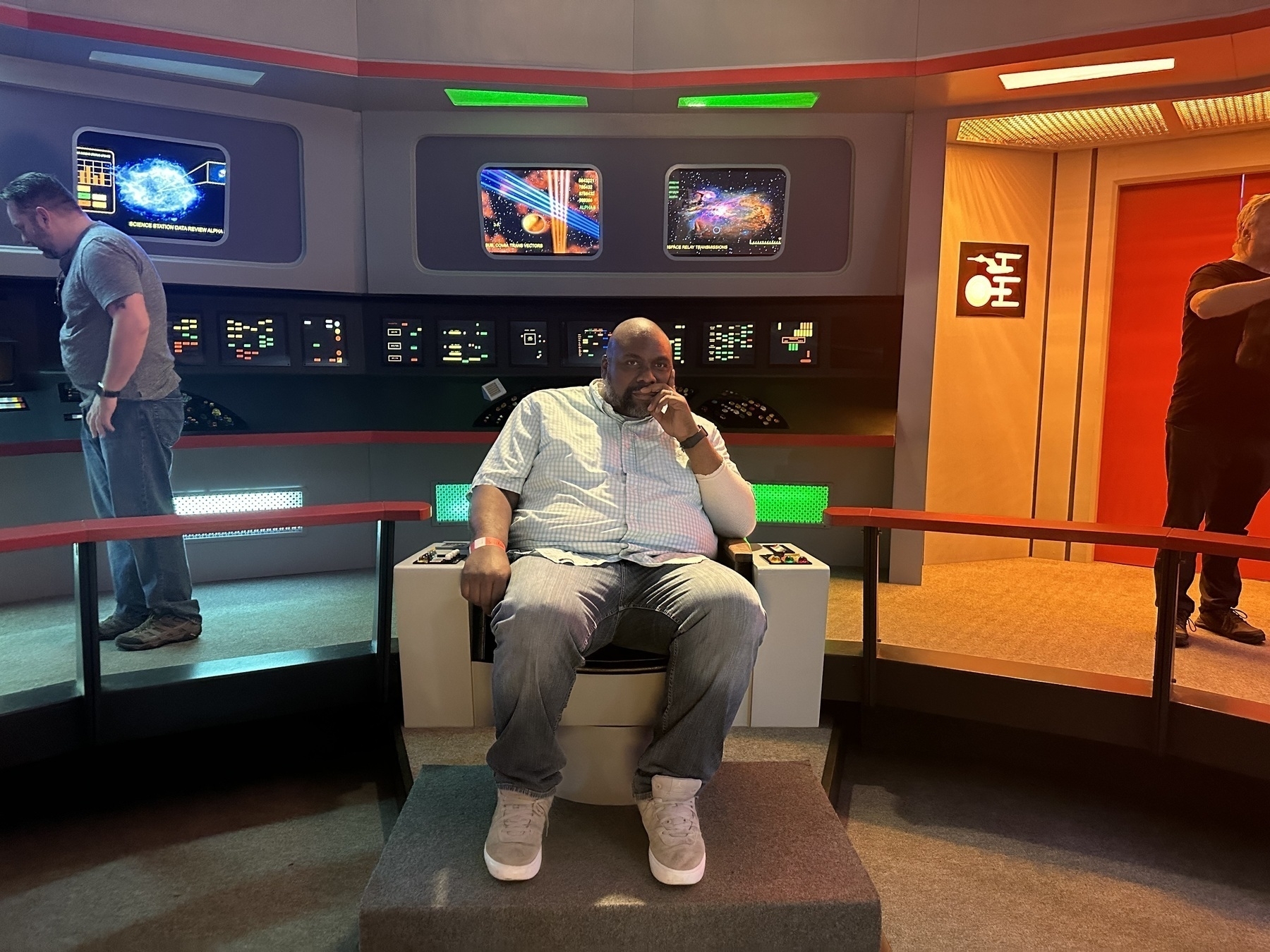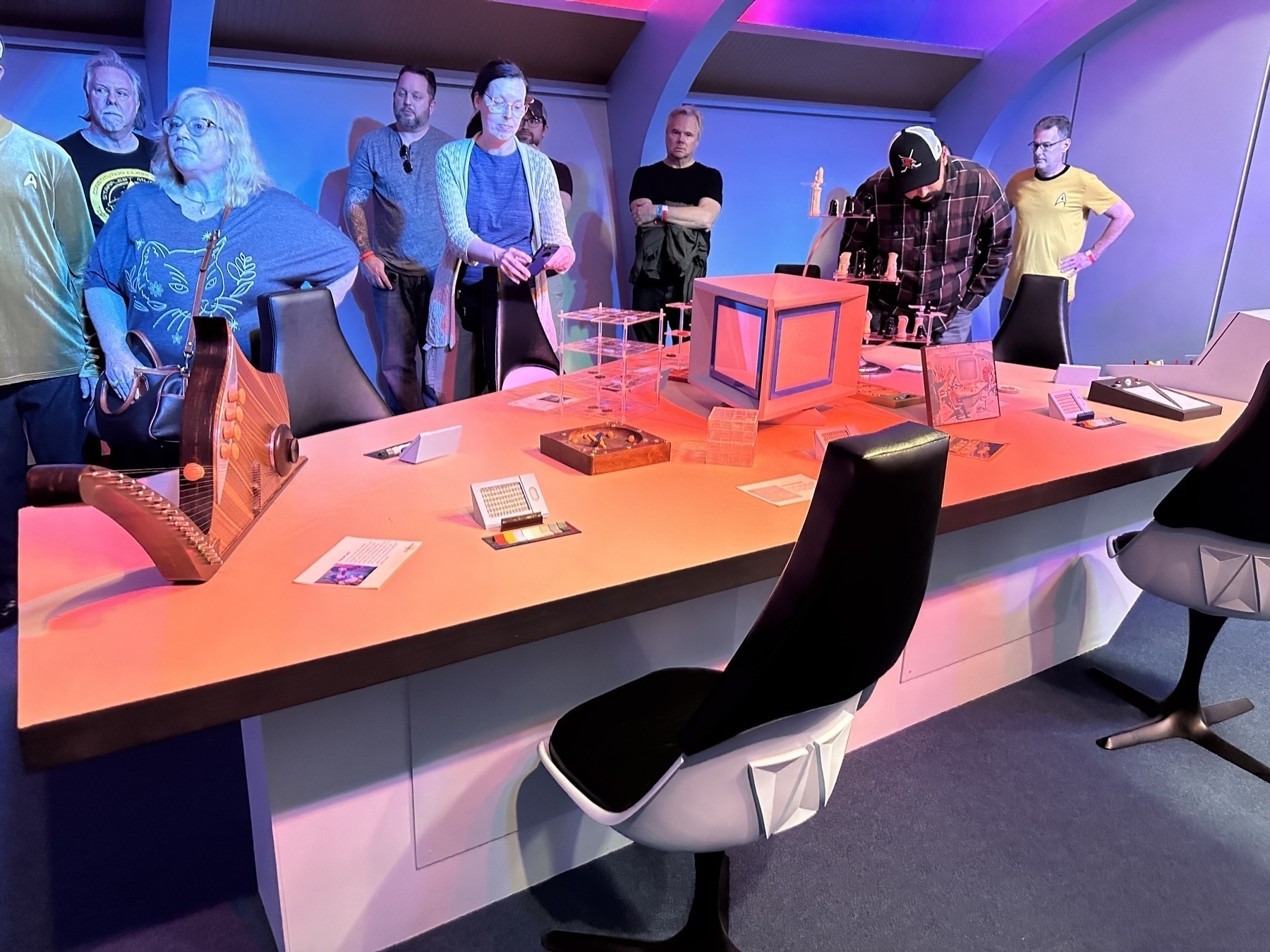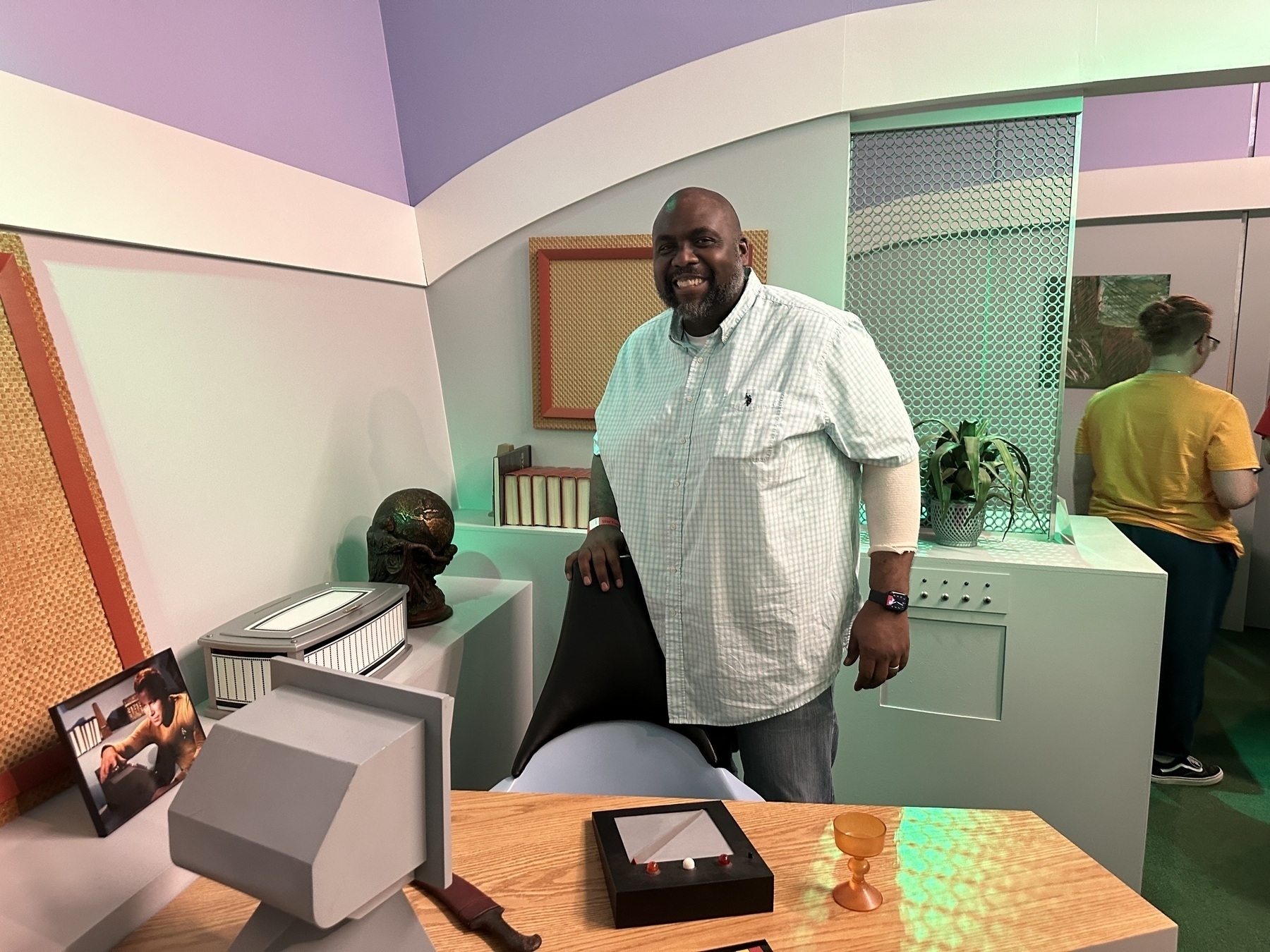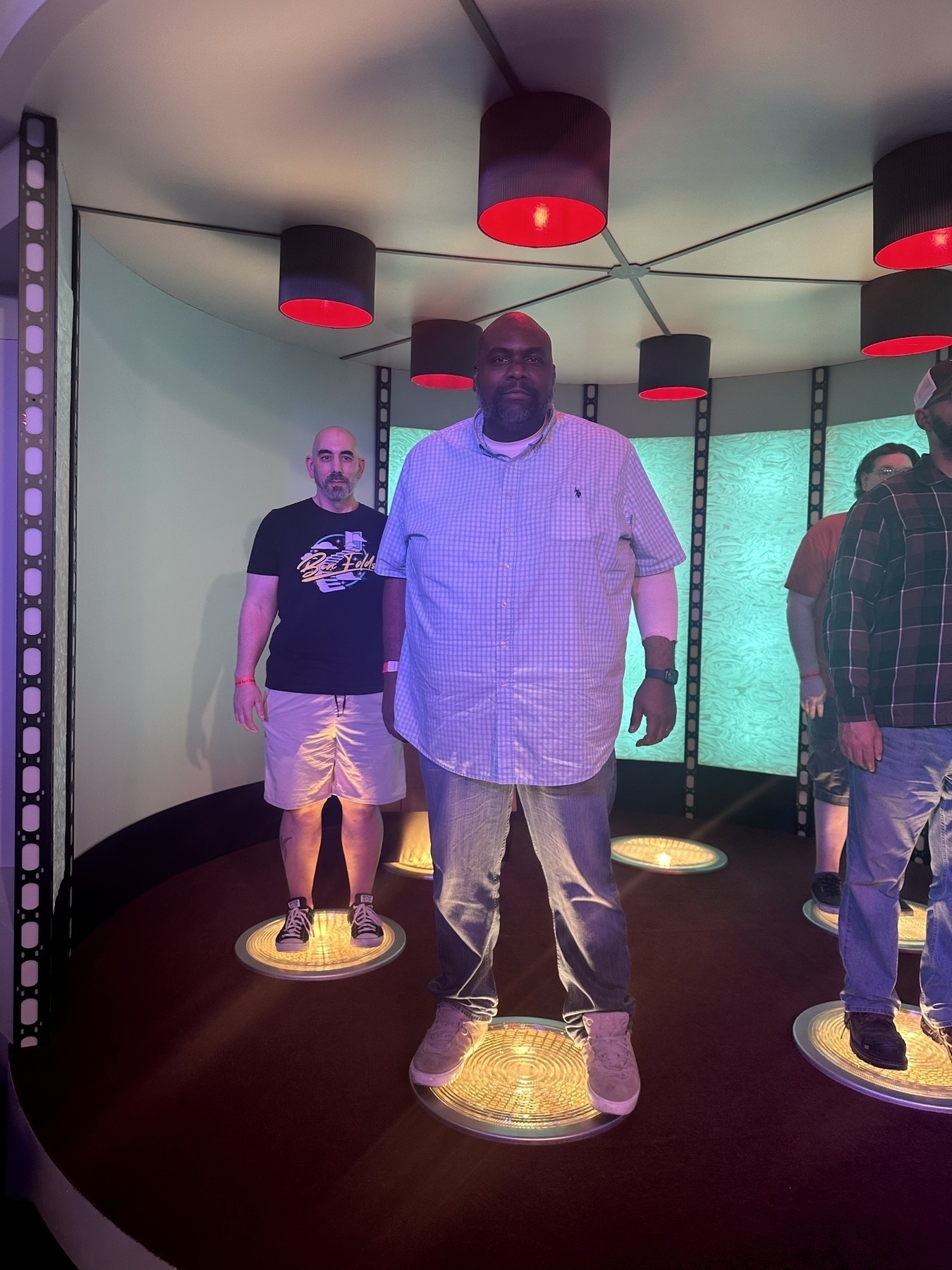-
Playing a family game of Sabobatage! Fun little card game where you’re trying to build 5 Boba drinks before your opponents.

-
Currently reading: How to Tell a Story: The Essential Guide to Memorable Storytelling from The Moth by Meg Bowles 📚
Leadership is about storytelling. Being able to frame a situation that communicates and motivates. Makes sense to start studying storytelling No one does it better than the Moth.
-
Microsoft is bundling Copilot with base Office 365 subscription
Microsoft is adding Copilot to the standard Office365 subscription, which is an interesting move. Many companies have put a lot of energy into controlling the use of AI Assistants in their environments. For a few people I’ve chatted with, this was a surprise. Seems like Microsoft has the easiest path to monetizing AI though. www.wsj.com/tech/ai/m…
-
More photos found. Some shots from Xander’s soccer game. I need to do more photography. I forget how much I enjoy it. Just another semi-creative outlet.









-
I was dumping some photos from my camera and came across these two from St. Patrick’s day last year. Time flies man.


-
Accidentally signed up for Pixelfeed with the username DarkAndNeedy. Which sounds so pitiful
-
I’ve never been a huge animal person, but this cat has grown on me. Him and his sister (RIP) were the perfect cats for our family.

-
Wishing you all the best in your battle! Stay strong but be prepared!
Wishing you all the best in your battle! Stay strong but be prepared!
-
That's great news Mike! Wishing you a continued and long remission!
That's great news Mike! Wishing you a continued and long remission!
-
A few photos from my trip to Trekconderoga last year. There’s a Star Trek museum in Ticonderoga that has a replica set of the Original Series Enterprise. It’s quickly becoming one of my favorite conventions.






-
Not what I was expecting, but still interesting
Currently reading: The Ten Year War by Jonathan Cohn 📚
This book has been engaging, despite it not being what I originally thought it would be. I expected more of an examination of the law post-implementation and an examination of its execution. The majority of the book is focused on the conception, creation and passing of the Affordable Care Act. Still quite interesting, but not what I expected.
-
Helping Your Loved Ones Navigate Your Digital Life After You’re Gone
Helping Your Loved Ones Navigate Your Digital Life After You’re Gone
Photo by Scott Graham on Unsplash I’ve been battling cancer since 2021. First, Multiple Myeloma and then after beating that I developed Acute Lymphoblastic Leukemia caused by my Myeloma treatment. To say the last few years have been a challenge is an understatement. While my prognosis is very good, my mind can’t help but wander down the darkest path. With so much of our lives being online these days it’s surprising how we overlook equipping our less technical inheritors with a digital roadmap.
With that in mind, I’ve been putting together a strategy for making sure my loved ones have everything they need in the event of my untimely passing. Because it’s not something many people think about, I thought I’d share some of what I’ve been doing. This isn’t legal advice but merely what I’m cobbling together. Your mileage may vary.
Planning in 1Password
At the center of my digital estate planning strategy is 1Password, a password manager that my family uses already. We put all of our passwords in the tool and have a shared vault for things that both my wife and I might need access to. Think of things like brokerage account logins, streaming services, login for the kids and their various services, etc. 1Password has a family plan where up to five family members can share a single account. (Each family member gets their own personal vault and you can create shared vaults for the entire family)
The nice thing about 1Password though is it can store more than just passwords. It can also store documents and generate one-time passwords for use with two-factor authentication. The document storage is the key to my digital estate planning. In our shared vault, I’ve created a simple document (in RTF format) that has a list of instructions on what to do in the event of my death. Because the document is in a secure vault I can be candid with the information I put into it. I can also create links directly to the 1Password entries I’m discussing in the instructions. For example, if I’m explaining the details of our ETrade brokerage account, I can create a link to the ETrade 1Password entry so my wife can easily login and get the information she needs.
The instructions document isn’t where I put any flowery goodbyes. It’s a manual on what to do when I’m gone. First and foremost I start with a list of all accounts and services that should remain active and why. For example, I have a paragraph explaining not to cancel my cell phone plan until the estate is resolved. Why? Because a lot of services still use text based 2FA. Keeping the line active will make dealing with 2FA a lot easier. I also mention my debit card remaining active. Even though we have a joint account our credit card numbers tied to the account are different. Cancelling the account might cancel key services like 1Password. Again, not an insurmountable task if it happens but just a lot easier if you know and can avoid cancelling those key services until you know you’re ready.
Next I have instructions on how to recover my 2FA system, Authy. This will help to get setup for many of the other accounts that are protected with 2FA and Authy. An alternative would be to have 1Password be your OTP client, producing the codes right next to the passwords. The only concern there is if your 1Password account gets popped then the 2FA isn’t really helpful. But considering your Authy backup codes are probably in 1Password as well, this might be a distinction without a difference.
After that I enumerate all of the financial accounts that my wife doesn’t have her own specific login to. For us it’s things like our Treasury Bonds account, my personal brokerage account (where I experiment on the market with limited funds) and my company 401k information. All of these accounts are setup with the appropriate beneficiaries but listing them explicitly helps to remind my loved ones what exists. Worse case, the family trust is the beneficiary and they’ll eventually gain access to the assets. But for planning purposes it’s nice to be able to login quickly and have an idea of what the state of the accounts are.
Finally, I have instructions on where any digital versions of important documents are. We typically have physical copies but I note where the digital versions are stored in the event there was a fire or something and those documents perished with. me. This is also where I’ll put restore instructions for my laptop. A set of instructions on how to restore my document management system from our cloud backup solution. Again, I don’t want to have to rely on the idea that my wife will have direct access to my laptop.
Before I move on to a few other services there’s another thing I’d recommend specifically for 1Password. 1Password has the concept of family organizers. They’re basically account administrators and have elevated privileges in the account. If you created the account then you are a family organizer but it’s useful to have more than one. You can find more information about family organizers on 1Passwords website. Having your spouse be a family organizer will help to future proof with any additional functionality that the role may be granted. But most importantly, it will allow your loved one to update the billing information to ensure your 1Password account stays active even after your linked credit card information has been retired. For additional peace of mind you may want to store your 1Password emergency kit somewhere secure. It has all the information necessary to recover your 1Password account. Unfortunately at this time there is no mechanism for you to will or pass down the 1Password account so the emergency kit becomes your best option.
Legacy Contacts
A few of the larger services offer what’s known as a legacy contact. The legacy contact is (typically) a designated contact that you specify that will gain access to your data at the time of your death. Each service has a slightly different process for specifying a legacy contact and how that contact must engage to recover your data.
- Facebook Legacy Contact will allow you to specify a person that will manage and memorialize your main account after you’ve passed away. They also have a similar optionto memorialize an Instagram account.
- Apple Legacy Contact will allow you to specify a contact that will gain access to the data stored in your Apple account after your death. There are limits to what data you get but things like photos, messages, notes and device backups are just some of the things the legacy contact will gain access to.
- Google Inactive Account Manager is a little bit different. It acts more like a dead man’s switch, where if your account has been inactive for a specified period of time, Google will send an e-mail to your contact with a message of your choosing. When you set it up, you can also specify to share data with the contact. The e-mail will include links for the user to download the data.
Wrap up
This has been a bit of a learning experience for me. The tough part is that you don’t know if it worked the way you hoped because you’ll be gone! But hopefully I’ve sparked some ideas on how to pass down the digital bits of your life to your loved ones and make a difficult time just a little bit easier.
-
I’ve noticed that this is a spectrum in terms of how people want to be engaged.
I’ve noticed that this is a spectrum in terms of how people want to be engaged. For folks I interact with regularly I’ve begun asking how they like to be engaged on chat and so far it’s a mixed bag. Sometimes it often depends on the message too. So “Hey, we need to talk” sounds way different from a manager and creates anxiety. Some people just want the full message at once. It’s kind of fascinating but also creates a mental burden for tracking the different preferences of people.
-
I really think that’s been the missing link in our strategy.
I really think that’s been the missing link in our strategy. The idea that if we do nothing, all of that emotional connectedness will bleed away. And what I’ve noticed is it’s different rates for different people. So managing that drainage has to be done at the direct manager level, meaning budgets will most likely need to come down to that level so managers can arrange events on their own with autonomy.
-
Thoughts on Remote Work and Emotional Connectedness
Thoughts on Remote Work and Emotional Connectedness
Photo by Annie Spratt on Unsplash There is a certain amount of gravity around remote work. Even those of us who like going to the office occasionally, struggle to produce the force necessary to escape the pull of our home office. It feels less of a matter of will power and more the universe conspiring against our innate desires. The commute, the kid’s karate class after work, laundry, a day of meetings that will be all virtual anyways, are all things that take a decent plan of an in-office visit and relegates it to the heap of unfulfilled ambitions for the week.
But there is a chorus of voices that are espousing the benefits of in-person work. The collaboration is stronger, the sense of connectedness deeper and the speed at which problems can be addressed swifter. For employers, this means the pull of the office must be stronger than the gravity of the home office. It’s not enough to match the incentives of the before times but we have to rethink what the strengths of in-person work is and figure out how to amplify them.
I don’t have the answer. In fact, I don’t believe it will be a single answer but more of a tapestry of solutions that are tailored to the culture of an organization. There won’t be a one size fits all but a drive to understand the desires for in-office connectedness.
One piece of this conversation that I’ve found interesting is the idea of emotional connectedness. Much of the discussions around return to office has focused on the concept of physical proximity being the engine for innovation. But emotional connectedness looks at emotional proximity as being the secret sauce. Co-workers feeling connected to not just each other, but to their role, team, department and company as a whole.
When I was introduced to this concept, I wanted to start thinking about how our emotional connectedness ebbs and flows over time. I started thinking about these emotions as a measurable resource. Imagine every employee had an emotional connectedness score that reflects their level of engagement. What increases someone’s level of connectedness? Since the pandemic, we’ve relied almost exclusively on in-person meetings, and for good reason. For a lot of people that social interaction dumps a huge point value into their connectedness score. Many people have a bit of a buzz about them after a couple days in the office connecting with colleagues. It’s also insanely easy for the employer since it’s leveraging an already sunk cost resource. (The office itself)
But there are two problems with this as the sole means of addressing the connectedness score. For starters, not everyone gets the same boost from in-office visits. For some people it’s a drain on them to be in person for a myriad of reasons. If in-office visits are the only way your company is boosting the connectedness score, you’re likely leaving a decent percentage of your staff unfulfilled. The second issue is a problem with all boosting methods and it’s what I describe as drainage. Our connectedness scores are boosted by activities, but they also drain at a regular rate. That rate might change per person. You can feel it as the buzz of your in-office visit begins to fade after week one. A month later you might be back in the same connectedness valley. Sue might be able to ride the high of her office visit for an entire quarter, while Jack may need a more frequent top-off of emotional energy. This drainage is something we have to pay close attention to and build rhythms in the organization that are aware of this drainage and are structured to curtail it. I took care to use the word curtail as oppose to eliminate. We can’t eliminate drainage. The best we can do is slow it.
We can’t rely solely on in-office visits though. The more frequent office activities become the more energy it takes to escape the home office gravity well. (The events quickly get taken for granted) Developing remote activities and rituals that also produce emotional connectivity is key. This is where things will deviate per organization. An organization with a young population might gravitate towards different activities than a company that skewed older. Because of that there’s no playbook for the type of events that could work virtually but here are a few broad categories I can think of.
- Employee Resource Group events centered around themes of interest
- Book Clubs
- Gaming groups/clubs
- Trivia groups
- Special interest projects
- Virtual coffee meetings (people are randomly paired together for 30 minute discussions)
The secret sauce here is to have a broad array of programs since you have a diverse array of personalities and interests. You also need to take care to create opportunities for smaller sets of connections, even just 1-on-1. There are quite a few people that don’t function well in large groups. Putting those connections into a remote setting just exacerbates that problem. Being able to come up with options of various engagement sizes is key.
Having a point person for each of these categories is ideal to serve as a coordinator and cheerleader of sorts. When groups are left to self-organize they often die prior to the group reaching a critical mass of attendance and consistency that allows the group to thrive on its own. These groups and activities don’t provide the same bang for your buck as an in-office visit, but the barrier to entry is much lower and they can provide small point boosts to the connectedness score in-between office visits.
Another source of connectedness points is the relationship an employee has with their work. This is something that leadership must have a strategy for. How does someone relate their job to the overall strategy of the business? How does their department factor into the corporate goals? This requires all levels of leadership to understand the strategy and how they fit in, but it also requires relentless repetition at all levels of the organization. As much as employees see themselves as attentive and engaged, the truth is people need to hear the same message over and over again in various mediums before it really begins to settle in. This means leaders need to have their talking points in-hand that they can say over and over and over and over again, so that employees see how they fit in to the larger plan.
A central theme that has come up in my thinking is the idea that managing this connection score is work. It’s work that we took for granted in the office because it came so naturally because of the setting. I dare say that we didn’t even respect that connection management as work but as goofing off. Bob is always at the water cooler. Pam spent half an hour chatting with Frank in the kitchen. We didn’t recognize the building blocks of relationships that those moments created. Now that we don’t have it, we’re desperate to recreate it.
Hybrid work is definitely going to be a tough nut to crack. We’ll need to experiment with a bunch of different options and have honest conversations about what keeps us at home, what gives us energy and what drains us. For some companies the first step will be creating the psychological safety necessary to have open, honest discussions about what works and what doesn’t. If everyone is living in a place of fear where any criticism of remote work leads to a return to office mandate, you’ll never receive honest feedback about the state of remote work. It’s been a huge help to many people but its far from perfect for the company or the individual. Being able to have honest discussions about that is step one.
-
I’m so glad you mentioned the school schedule times.
I’m so glad you mentioned the school schedule times. I’ve noticed the same! So many requests for volunteers at 1pm or assemblies at 11am. It’s really hard to balance it all.
As a leader I try to be as transparent as possible about why I’m taking time off so others feel comfortable. Parents shouldn’t have to miss out on their kid’s milestones because they don’t have the flexibility to miss work. Ugh! -
It’s never enough in their little minds!
It’s never enough in their little minds! And as parents we unfairly internalize that sometimes. It’s going to be interesting to see case studies in the future on the decisions we’re making. Especially for those of us who were doing remote schooling during lockdowns. I can already see some of the social impacts it had on my kids.
-
This is a great idea and will be particularly useful as summer break approaches.
This is a great idea and will be particularly useful as summer break approaches. We make a schedule for them but never thought to share my schedule as well.
-
Absolutely.
Absolutely. I can do more with him and for him thanks to remote work. Personally I wish there was more of a balance with in-office (for me) but very few people want to be in-person with any regularity, which I can respect.
-
The Impact of Remote Work on My Children
The Impact of Remote Work on My Children
Photo by charlesdeluvio on Unsplash My son said something that was a little alarming and troubling which has led me to deep thinking about the impact of remote work. My son had a series of poorly communicated events at school today, which we found out about the night before. I’m completely unavailable to my family at the moment so it falls to my wife. On their way in to the first part of the assembly, my son asked her how long she could stay. Unfortunately my wife had a call she couldn’t miss at 9am. Our son is incredibly empathetic and responded with “It’s OK. Work is more important”, which isn’t what any parent wants to hear. My son is very well loved and he and his mother share a very deep bond. So I’m left wondering, how did we get here?
Remote work has become a central chord in the harmony of our household rhythms. Remote work allows us to live a lifestyle that was previously impossible due to the scheduling void that our commute generates. The Internet talk a lot about remote work from the perspective of the worker but doesn’t often talk about it from the perspective of the family, but more specifically, the children.
My son Xander is 9 years old and my daughter Ella just turned 12. I’m going to focus on Xander for the purposes of this story. When my company moved to remote work on March 11th 2019, (thank you Rudy Gobert ) Xander was 5 years old. For a 9 year old, that’s an eternity, accounting for a little over half his life. He has no real memories of my wife and I going into the office on a daily basis. That lack of context seems minimal at first until I began to think about how that structures his mental model of work and how that mental model relates to him and his value.
When the family all had somewhere to be in the morning, we all woke up, we all did our morning routine together, the kids went somewhere, parents went somewhere and then we all reunited at roughly the same time. There was a shared experience around how our time was used during the day. Even at a young age, our children can relate to the idea that “Mommy and Daddy are doing something like school!”, a shared experience that “required” you to be in a certain place with certain people. Then COVID hits and the memories of those shared experiences fade-to-black as our new reality sets in.
Now, it appears to be difficult for my kids to associate remote work with commitment. Part of it is because remote work schedules are nebulous in a way. Our hours have changed, my wife and I work later into the evening or make up hours in the evening from missed time during the day. With work not being associated with a place and specific time, work seems more like a choice than a commitment.
We see this manifest when Xander comes home from school, for any reason, during our working hours. He’ll ask if we can play a board game or that he’s bored and needs something to do. It’s hard for him to consider us “not there”. Every rejection in favor of work, tilts the scales of value in his mind, leading to statements like “work is more important”.
We’ve never taken the time to discuss with him in detail the nature of remote work because we relied on his memories of a different time. Memories he doesn’t actually have any more. This is less of an issue with my daughter, because she’s older and still has some fleeting memories of the before times. The question now becomes how do we talk to our kids about the nature of remote work and what assumed knowledge do we need to rethink?
My initial bullet list is to mention:
- We work with other people who also have families and commitments. Having a shared, overlapping time frame where we work is important to make sure people can meet those commitments and share time with their family.
- Scheduling certain things is very important. This way everyone knows when they need to be available and when other things need to be scheduled around it.
- Sometimes we can take time off during the day to do personal things, but it doesn’t change what’s expected from us and when.
The hard part I’m struggling with is how to explain the value part of the conversation. If I’m choosing work over playing a board game with him, in a sense I am saying that work is more important in that moment. Not more important than him as a person, but more important than what he would like me to do in that specific moment. I’m hoping the nuance will come through.
I’d be very interested to hear if others have experienced anything like this. We’re raising children in a new world, which is bringing up new questions and obstacles. Obstacles that my parents and in-laws have no experience with, making them just as in the dark as we are.


